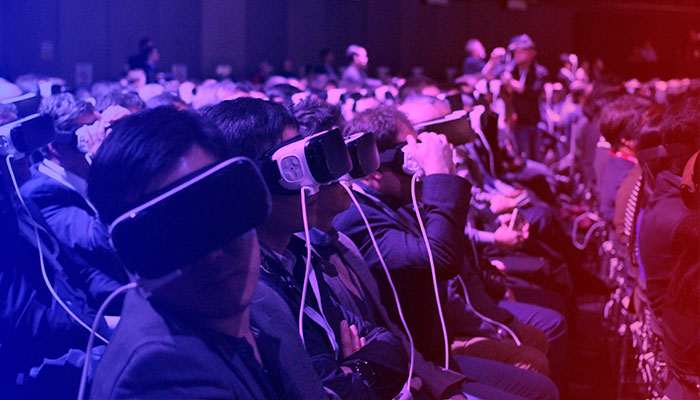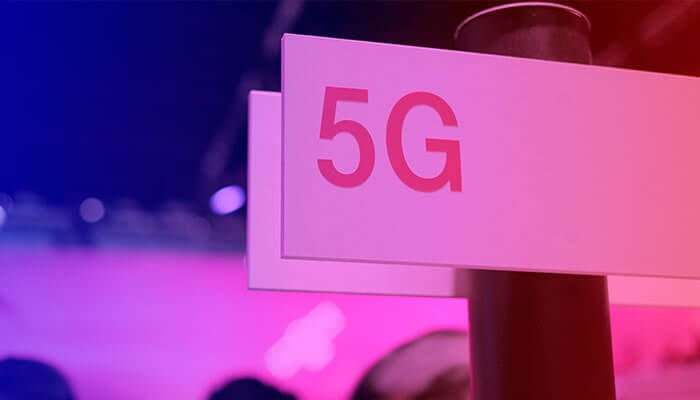What is the Mobile World Congress?
Running from today until this Thursday 28th February in Barcelona, the Mobile World Congress is the largest exhibition for the mobile industry and meeting point for technology innovators in the world.
It is an unmissable opportunity for tech-minded attendees of different backgrounds to find out about the hottest new developments in the field, network, sit in on conferences and participate in various seminars and summits.

Intelligent connectivity at the core
Over 2,400 companies and around 107,000 attendees from the international technology community are expected to pass through the turnstiles over the course of this three-day event, whose mission is to advance “intelligent connectivity”.
Intelligent connectivity has six broad tech categories: Internet of Things (IOT), Artificial Intelligence (AI), 5G (wireless mobile network connectivity), Fintech (financial technology instruments), Automotive and Health.
You will be forgiven for not understanding terms like Fintech, AI and IOT, since the concepts themselves didn't enter the common lexicon until relatively recently, but they are the future for intelligent connectivity engineering.
Take AI technology, for example. "Smart fridges" can tell when you're out of milk; voice-activated "smart speakers" play your favourite music and answer your every question.
Creating future innovators
Not only does the Mobile World Congress exist to exhibit current trends in mobile technology and recent breakthroughs from all over the world, but it seeks to hatch the next generation of tech pioneers.
Launched at MWC 2014, an initiative called 4YFN encourages attendees to collaborate on start-up projects in the hope of paving the way for mobile technology entrepreneurship.
The acronym, which stands for “4 Years From Now”, is the MWC’s innovation platform that reinforces Barcelona’s position as a focal point of digital start-up businesses.

Mobile technology
Mobile technology has come a long way in a relatively short period of time, that much is undebatable.
Gone are the days of the “brick phones” of the late-1980s and early-1990s, which used 1G technology. 2G connectivity brought us SMS messaging, 3G allowed us to access the internet wirelessly for the first time, and 4G – introduced in 2008 – supported gaming and high definition (HD) television on mobile devices.
Now 5G is being thrown into the ring.
I’m beginning to think this might become a recurring theme; I suppose in the same way my parents thought the “Now That’s What I Call Music” pop compilations2 would fizzle out after the first few long-play albums, or that there would only ever be three television channels.

Conclusion
Whether we like it or not, mobile devices are the future of internet-based connectivity. Integrations like mobile payment apps, cloud storage and fingerprint/facial recognition have increased the security, usability and overall usefulness of the smartphone, meaning that the portable device is used in virtually all facets of modern life.
As if to prove where the mobile market is headed, I wanted to end with a statistic. According to the statistics portal Statista, mobile phones accounted for 2.9% of all website traffic in 2010. In 2018, this figure rose to 52.2%3. For the first time, mobile internet traffic has surpassed the home computer.
Is this surprising? Do you use your phone more now than ever before? Or do you think many mobile applications and add-ons are just unnecessary appendages? Leave me a comment if you enjoyed this post!
Sources:
1 https://www.mwcbarcelona.com/
3 https://www.statista.com/statistics/241462/global-mobile-phone-website-traffic-share/
Photo courtesy of Maurizio Pesce www.flickr.com/photos/pestoverde/26420235490/
Photo courtesy of Dan Taylor for tech.eu
Photo courtesy of Kārlis Dambrāns www.flickr.com/photos/janitors/25472265426
 en
en



 Vlaams-Nederlands
Vlaams-Nederlands
2 Comments
Leave a Comment
DISCLAIMER
The opinions and comments expressed by contributors to this Blog are theirs alone and do not necessarily reflect the views of VIVA Homes Under the Sun Ltd, any of its associated companies, or employees; nor is VIVA to be held responsible or accountable for the accuracy of any of the information supplied.
john peterApril 4, 2019 at 8:21 am
Your good knowledge and kindness in playing with all the pieces were very useful. I don’t know what I would have done if I had not encountered such a step like this.
Simon LivettApril 4, 2019 at 8:40 am
Have you got something to say?